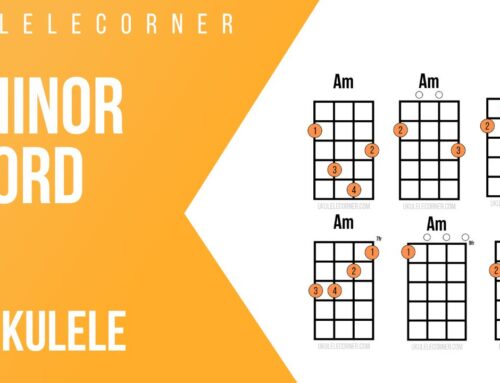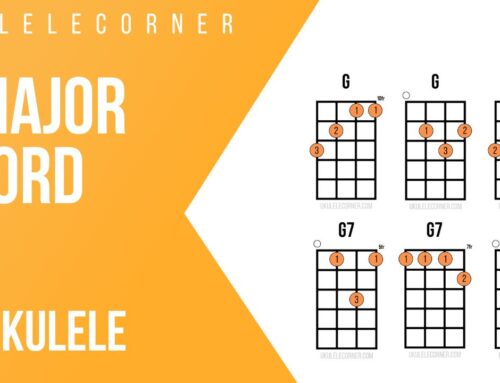In this lesson, I will show you how to change the strings on your ukulele.
What are the best strings to use?
While many different kinds of strings will work fine (including ukulele strings), I find D’Addario classical guitar strings work best for tone and ease of use. So I use the first four strings of the D’Addario Pro Arté EJ45 classical guitar strings for my ukuleles. These will be much longer than you need on the ukulele, but that gives you a lot of slack to make sure the string is secure and won’t slip at either the bridge or the tuning peg—we will clip off the excess string later.
What will you need?
In addition to a pack of strings, it is very helpful to have a string winder. These speed up the process and most of them also include a built-in clipper to trim off excess string ends. I like this one from D’Addario/Planet Waves.
So let’s get started.
How to Change Strings, Step 1: At the bridge
First, pull one end of the string through the hole at the bridge and leave quite a bit of slack on the other side. We’ll need the slack to make sure the string is secure when we tie the knot and does not slip.
Next, to make the knot, follow these three steps:
- Pull the string back underneath itself (wrapping from the bridge back toward the headstock);
- Wrap the string back around itself and through the loop that has formed and then repeat this one more time (if you use a wound fourth string, you don’t need to repeat this step—one wrap is enough);
- Tighten the string by holding onto the string from the headstock side and pulling the string taut from the bridge side. As you make this last step, make sure the crease is “locking in” on the back side of the bridge so it won’t slip.
How to Change Strings, Step 2: At the headstock
Now we’ll take the string and pull it through the tuning peg at the headstock. We want to leave about six inches of slack on the string so don’t pull the string taut. Once you have the right amount of slack, hold the string in place just above the nut with your left index finger.
Next, wrap the string back clockwise around the tuning peg and go through the tuning peg hole again (on the 3rd and 4th strings, you’ll want to do this counter-clockwise). Tighten by pulling taut on both sides of the peg to lock the string in place.
Finally, begin winding the string up to pitch counter-clockwise using your string winder (on the 3rd and 4th strings, you’ll want to do this clockwise). As you do so, keep the string you are holding in place with your left index finger on top of the wraps. Once the string is almost taut, make sure the string goes into the nut slot for the correct string, and tune to pitch.
How to Change Strings, Step 3: Tuning, stretching, tuning, stretching . . .
After you have tuned the string to pitch you’ll notice the string has a tendency to quickly go back flat. One way to alleviate this is to gently stretch the string across its whole length. But we want to be careful not to overstretch the string at the same time. So first fret the string at the first fret with a left-hand finger and then gently pull up on the string with your right hand. Repeat this in the middle of the fretboard (finger on the fifth fret) and higher up as well. This will make the string go flat so you’ll need to tune it back to pitch, but if you continue stretching and tuning and stretching and tuning, this will speed up the process and the string will stretch out more quickly.
How to Change Strings, Step 4: Clip excess strings
Make sure to trim off the excess strings at both the bridge and tuning peg end using your string winder cutter.
Congratulations, you’ve just changed your strings on ukulele!




I’ve always wondered about putting classical guitar strings on a ukulele but I was afraid of damaging the instrument. I just put the Pro Arte strings on my (cheap) baritone and I can’t believe how good they make it sound! Thank you!
I forgot to ask: do you have a recommendation if I wanted to string my uke high gCEA with classical guitar strings?
I have used the high E string for both the G and A strings (4th and 1st strings) then the classical guitar 3rd and 2nd strings for the 3rd and 2nsd string of the ukulele. The tension is higher than normal ukulele strings but I like the tone and feel. I recently have been using regular fluorocarbon ukulele strings for the high G tuning and like these as well.